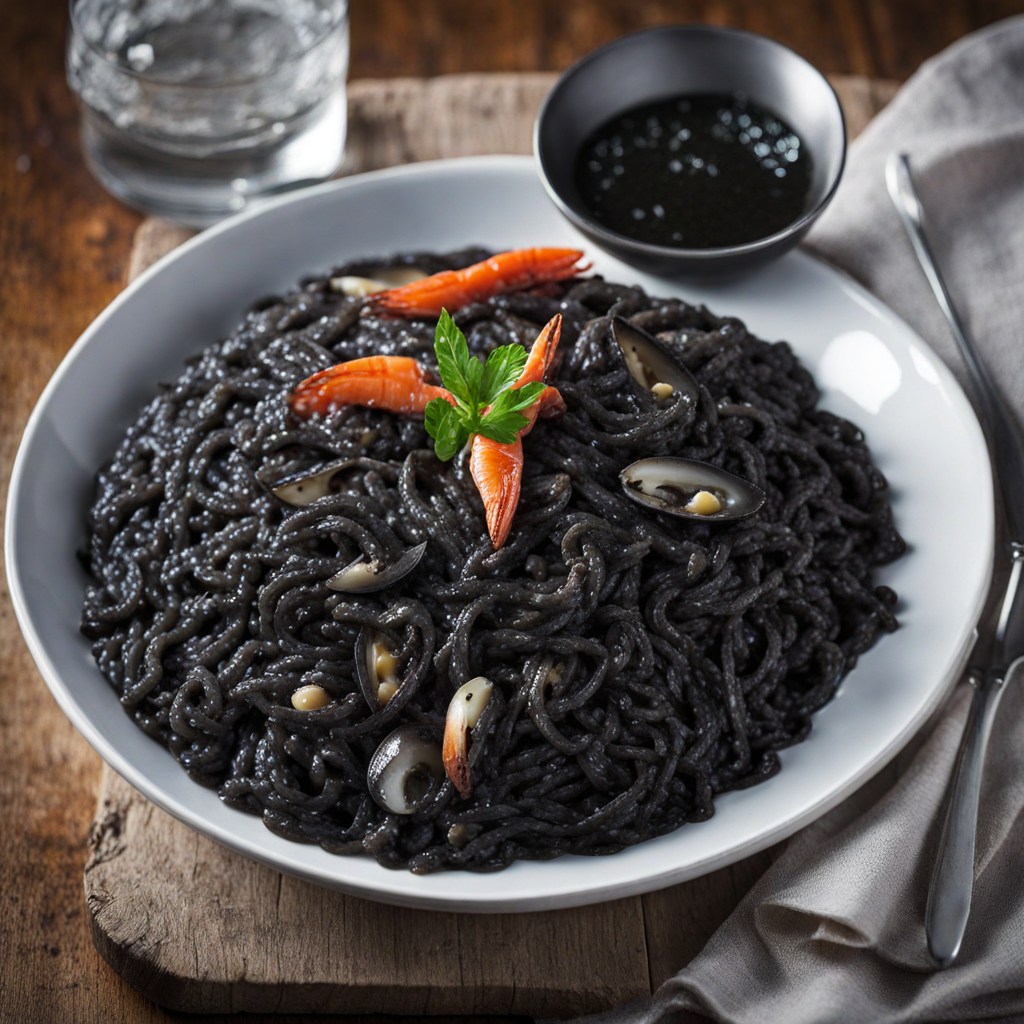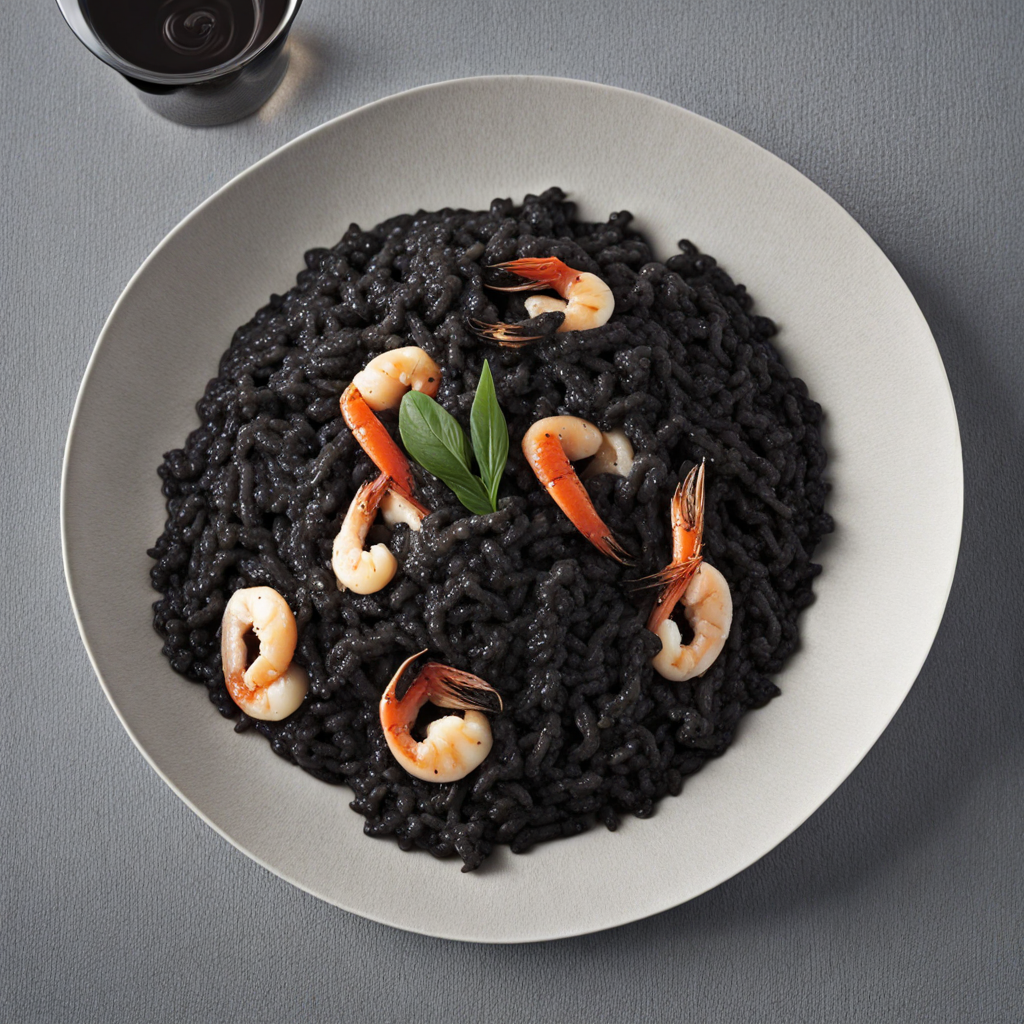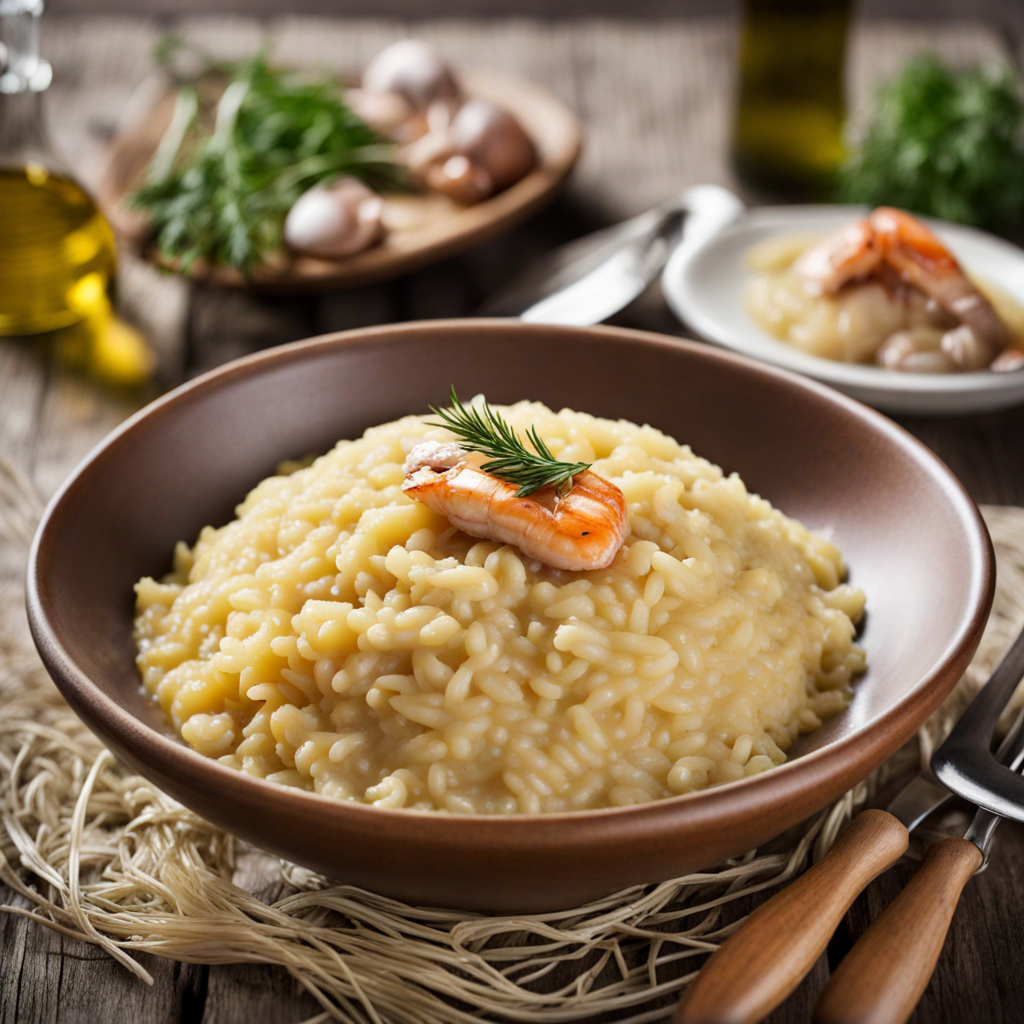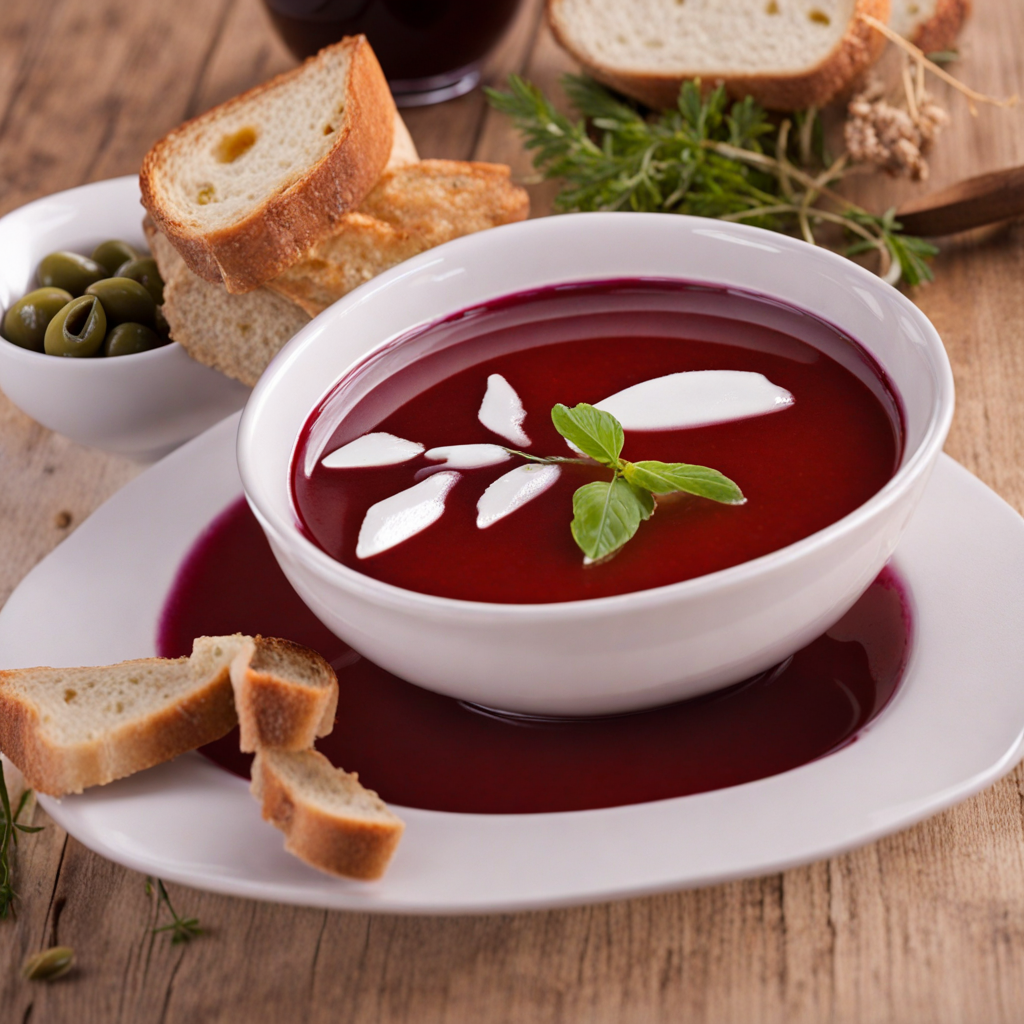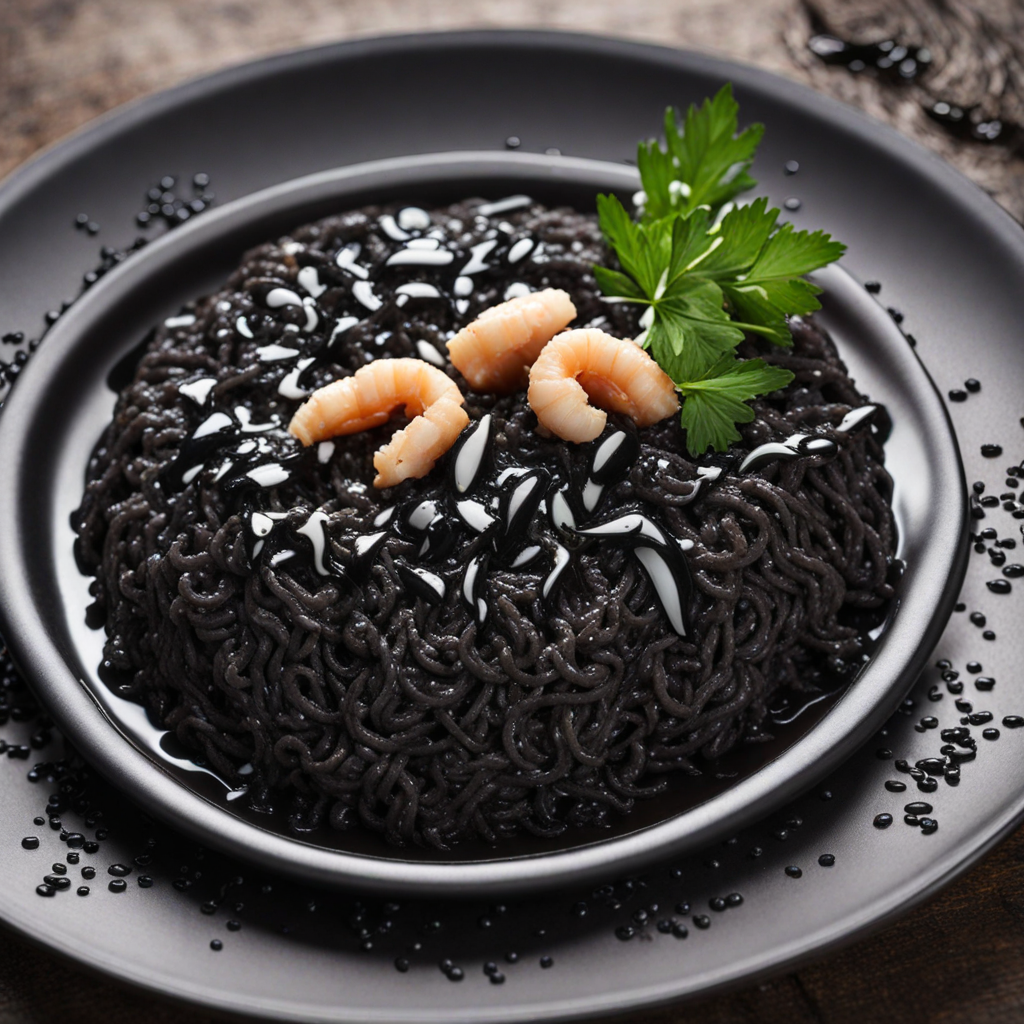Black Risotto
Black Risotto, or 'Crni Rižot,' is a captivating dish hailing from the coastal regions of Croatia, particularly popular in the city of Rijeka and the islands of the Adriatic Sea. This unique risotto is distinguished by its striking black color, which comes from the ink of cuttlefish or squid, giving it an alluring appearance that tempts the senses. The dish is traditionally prepared with Arborio rice, known for its creamy texture, and is cooked slowly to absorb the flavors of the sea, creating a rich and decadent experience with each bite. As you dive into a plate of Black Risotto, you’ll encounter a harmony of flavors that evoke the essence of the Adriatic. The ink imparts a briny depth, capturing the essence of the ocean, while garlic, onions, and white wine add aromatic layers to the dish. Often, seafood such as fresh cuttlefish, shrimp, or mussels are incorporated, enhancing the dish’s maritime character. A sprinkle of parsley or a squeeze of lemon can provide a zesty contrast, brightening the richness of the ink and creating a well-rounded flavor profile that is both unforgettable and indulgent. Black Risotto is not just a feast for the palate; it’s also a visual spectacle that invites curiosity and exploration. Served in a bowl or on a plate, the glossy, deep black rice is often garnished with seafood and a drizzle of olive oil, making it an eye-catching centerpiece at any dining table. This dish represents a delicious blend of tradition and innovation, reflecting Croatia's rich culinary heritage while inviting food lovers to embark on a new gastronomic adventure. Whether enjoyed in a local konoba (tavern) or prepared at home, Black Risotto promises an exquisite taste of Croatia’s coastal charm.
How It Became This Dish
Crni Rižot: The Dark Delight of Croatian Cuisine Crni rižot, or black risotto, is a striking dish from Croatia, particularly beloved along the coastal regions of the Adriatic, especially in the Dalmatia and Istria regions. Its deep, inky color primarily comes from cuttlefish or squid ink, which not only imparts an alluring hue but also infuses it with a briny, oceanic flavor. To truly appreciate crni rižot, one must delve into its historical origins, cultural significance, and the evolution of this unique culinary staple. Origins The roots of crni rižot can be traced back to the region's long-standing relationship with the sea. The Adriatic has been a vital source of sustenance for coastal communities for centuries. Fishing was not just a means of survival; it was a way of life that shaped the social and cultural fabric of the area. As a result, seafood became a central component of local diets, leading to the development of various seafood dishes. Cuttlefish and squid have long been prominent catches for fishermen, and their ink was traditionally viewed as a byproduct. Early on, resourceful cooks began to incorporate this ingredient into their dishes, leading to the creation of crni rižot. The use of squid ink is not exclusive to Croatia; it has parallels in Italian cuisine, particularly in dishes like risotto al nero di seppia. However, the Croatian version distinguishes itself through local ingredients and preparation methods, reflecting the unique cultural influences and culinary philosophies of the region. Cultural Significance Crni rižot is more than just a dish; it is a symbol of Croatian coastal heritage. The preparation and enjoyment of this dish often occur during gatherings and celebrations, embodying the spirit of togetherness and communal dining. It is a staple at family gatherings, weddings, and festivals, where it is often served alongside other local delicacies. The dish reflects the cultural amalgamation of Croatia's coastal regions, influenced by Venetian, Ottoman, and Mediterranean cuisines. The Venetians, with their extensive maritime trade and cultural exchanges, introduced rice cultivation to the region. Initially imported from the East, rice became a staple that adapted to local tastes and ingredients. The Ottomans, too, left their mark, contributing spices and cooking techniques that would eventually find their way into Croatian kitchens. In recent years, crni rižot has gained prominence as a representative dish of Croatian gastronomy on the global stage. The rise of culinary tourism in Croatia has brought attention to traditional dishes, with crni rižot standing out as a must-try for visitors seeking an authentic taste of the Adriatic. This dish has become a culinary ambassador, allowing people worldwide to connect with Croatian culture through its flavors. Development Over Time Crni rižot has evolved significantly over the years. Its foundational ingredients have remained largely consistent—rice, seafood, garlic, onion, olive oil, and cuttlefish or squid ink—but variations have emerged to reflect regional preferences and available ingredients. In some coastal towns, you might find the addition of tomatoes, while others may include various shellfish or even fish fillets alongside the cuttlefish. The traditional cooking method involves sautéing onions and garlic in olive oil, adding rice, and then slowly incorporating stock, typically made from fish bones or shells, until the rice is creamy and al dente. The squid ink is added towards the end, transforming the dish into the striking black risotto that captivates both the eyes and the palate. In modern gastronomy, chefs have begun to experiment with crni rižot, pushing the boundaries of traditional recipes while maintaining the essence of the dish. Innovative twists may include the use of local white wines, fresh herbs, or even the pairing of crni rižot with unconventional side dishes. Such adaptations are reflective of a broader culinary trend in Croatia, where traditional recipes are being revitalized and reinterpreted to appeal to contemporary palates. Moreover, the rise of the farm-to-table movement has inspired many chefs to prioritize local and sustainable ingredients, further enhancing the quality and flavor of crni rižot. This approach not only connects diners with the land and sea but also honors the culinary heritage that crni rižot represents. Conclusion Crni rižot is more than just a dish; it is a culinary narrative woven into the fabric of Croatian culture. From its humble beginnings in the fishing communities of the Adriatic to its status as a beloved national dish, crni rižot encapsulates the essence of coastal living and the rich tapestry of influences that have shaped Croatian cuisine over the centuries. As both a comfort food and a gourmet experience, crni rižot invites diners to savor the flavors of the sea while celebrating the cultural heritage of Croatia. Whether enjoyed at a seaside restaurant or prepared at home for family and friends, this dark delight continues to captivate and inspire, ensuring that its legacy will endure for generations to come. In a world that is increasingly disconnected from its culinary roots, crni rižot serves as a delicious reminder of the power of food to connect us to our history, culture, and each other.
You may like
Discover local flavors from Croatia


